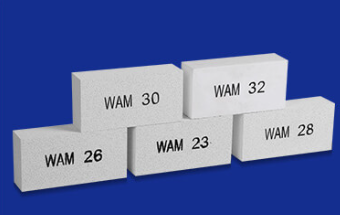The Best Solution For Energy Saving And Reducing CO2 Emission
The Best Solution For Energy Saving And Reducing CO2 Emission
 Tel: +86-532-85717690/85717352/85832089
Tel: +86-532-85717690/85717352/85832089 E-mail: wam@wamcn.net
E-mail: wam@wamcn.net
There are diverse insulation materials that could help you retain heat and keep the interiors warm and cozy whether you are trying to insulate your home or a commercial building.
Insulating firebrick is one of the most common firebricks used in high-heat applications such as burners, combustion chambers, and kilns.
They are used in kilns and blast furnaces due to their high thermal conductivity.
Furthermore, because they require little energy, these firebricks are preferred for high-temperature environments.
On average, refractory insulating bricks have numerous advantages. Choosing the best fire brick, in contrast, can be difficult.
This is the more reason why you need to contact reliable manufacturers of insulating firebrick to make the right selection of firebricks easy for you.
The application will determine the type of firebrick that will work best for you. Below are three categories and applications for each.
High-alumina firebricks are excellent firebrick due to their resistance to corrosion and performance in high-temperature burners.
They're used mostly around metallurgical processes, glass tanks, concrete, ceramics kilns, and limestone, to name a few. High alumina firebricks are used in the refineries, refractory, and petrochemical industries.

Super-duty firebricks are used as insulation material in extremely high temperatures. The majority of super-duty bricks are made of silica, which is exceptionally strong and heat resistant.
Many different types of super-duty firebricks are being used in the steel and glass industries.
These firebricks are commonly employed in cold weather. They do not absorb heat, unlike other refractories. They can, however, be used to keep surrounding heat furnaces warm.
Of course, firebricks are effective insulators because they are a type of refractory brick that can withstand extremely high temperatures.
Since they act as heat insulation material, firebricks are best suited for lining kilns, burners, furnaces, fireplaces, and boiler refractory material.
These bricks can even withstand high temperatures of close to 1400°C, but they only transfer a small amount of heat. As a result, it improves energy efficiency, which benefits many major industries.
Select an insulating fire brick with the following qualities;
1. Thermal conductivity ought to be as low as possible.
2. Porosity is advantageous for insulating and conserving energy.
3. Insulating bricks with high crushing strength and volume stability can withstand high temperatures.
4. Dimensional accuracy
5. Storage at low temperatures
6. Heat is retained at a low rate but absorbed at a greater level, resulting in energy savings.
7. Purity is higher. Impurities such as metal, alkalinity, and iron should be scarce.
It is critical to select the most appropriate insulating firebrick for your operation, regardless of its application.
While this information may help you choose the right firebrick, you also should consult professional manufacturers of insulating firebrick to ensure you're using the correct one.
Selecting the ideal insulating brick is just as crucial as choosing the right supplier. Do contact us and you will be glad you invested in the best firebrick.